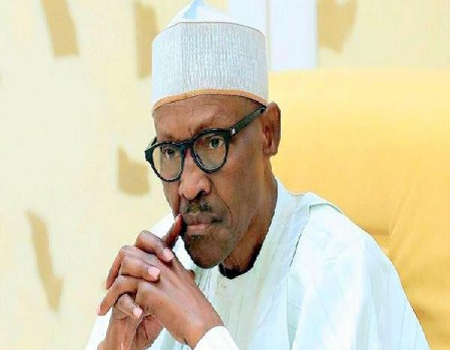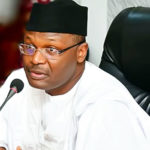STAKEHOLDERS have agreed that inadequate funding remained the major challenge of the education sector in Nigeria.
They also said it was responsible for the rot in the system, and as the perceived poor quality of graduates from the nation’s tertiary institutions over the years.
While the allocation of the national budget seems to have marginally increased since 2015, the percentage allocation to the sector has, however, evidently dipped, or at best stagnated, over the period.
The administration of former President Goodluck Jonathan allocated N492.03 billion (12.9 per cent of the national budget) to the education sector in 2015.
Since then, the allocation to the sector has stagnated around seven per cent of national budget, even though the total amount available to the sector has steadily increased.
In 2016, out of the N6.07 trillion national budget, just N369.6 billion was allocated to education, while in 2017, 455.41 billion (representing 7.4 per cent) of the N7.4 trillion went to the education sector.
Also N605.8 billion (representing 7.04 per cent) of the 8.6 trillion national budget for 2018 was allocated to the education sector.
But while in 2019 this was raised to N620.5 billion, representing 7.04 per cent of the N8.83 trillion national budget.
The education sector has consistently witnessed abysmally releases since 2015.
The following were the capital releases obtained from the Federal Ministry of Education for the period: N13, 279 ,387, 859.00 in 2015; N16,388,056,842.00 in 2016; N28, 441, 251, 134.00 in 2017 and 27, 943, 111, 164.00 in 2018.
From available figures, President Buhari-led administration allocated N2.07 trillion to the education sector in the last four years, whereas only about N86 billion was actually released from the Federation Account covering the main ministry, parastatals, polytechnics, colleges of education, universities and Unity Colleges.
This is aside from the intervention from the Tertiary Education Trust Fund (TETFund), Universal Basic Education Commission (UBEC) and other special interventions.
It is also imperative to state that substantial part of the budget to education went to the federal tertiary institutions, with universities having the lion share.
Investigation revealed that a third of the national budget went to tertiary institutions, including the 43 federal universities, federal polytechnics and colleges of education, while the 104 Unity Colleges get less than 0.002 per cent, including the 25 parastatals and the Federal Ministry of Education itself.
The immediate past Minister of Education, Malam Adamu Adamu, while presenting his valedictory press briefing on May 21, 2019 in Abuja, admitted that funding had been one of the major challenges of tertiary education in the country.
He noted that his administration had inherited the non-implementable agreement between the Federal Government and the Academic Staff Union of Universities (ASUU) which total value in monetary terms was put at N1.3 trillion, and which payment was to be spread over six years.
The fund was for the revitalisation of the universities based on the report of the Needs Assessment commissioned into the universities that uncovered unimaginable rot in the nation’s Ivory Towers.
Adamu had noted the government of President Jonathan released N200 billion in 2013 to all public universities, explaining that the amount was released to an account with the Central Bank of Nigeria (CBN) for institutions to access their monies upon meeting some basic requirements.
He further noted that between 2014 and 2017, the nation witnessed an economic recession. Consequently, there were no releases in 2014, 2015, 2016 and 2017, respectively.
The ex-minister, however, disclosed in 2018 that the Federal Government released the N20 billion directly to the universities, and that all of them got their share of the money.
Investigations also revealed that the universities had not been able to fully access the N200 billion released to the CBN since 2013. All the 73 public varsities only accessed the first tranche of 50 per cent of the N200 billion.
For the second tranche of 40 per cent, it was gathered that only 56 institutions had access the last 10 per cent representing the third tranche of the N200 billion.
Documents obtained from the Federal Ministry of Education also revealed that the Federal Government, through the Tertiary Education Trust Fund allocated N727, 225, 862, 128.86 worth of investment in critical areas of infrastructure development in the tertiary institutions.
The fund was meant for physical infrastructure, project maintenance, Information and Communication Technology (ICT) support, entrepreneurship, library development, special high impact projects, academic staff development, and research, among others.
A breakdown of the funding efforts by the Federal Government indicates that in 2015, each public university (federal and state) was allocated N337,000,000, bringing the total allocation to public universities to N24,938,000,000 for that year.
In 2016, each public university was allocated 1,009,410,000, bringing the total allocation to public universities to N74, 696, 340, 000). In 2017, each public university was allocated N65,150, 000, bringing the total allocation to public universities to N48,777,100,000.00.
In 2018, each public university in the country was allocated N785, 823,700, bringing the total allocation to public universities to N58,150, 953, 800.00. Accordingly, the total allocations to public universities during the period stood at N206, 562, 393, 800.00.
Despite these funding efforts, however, the question is how have these institutions fared in terms of students’ intake and preparation for the future, among other indices? The global ranking of Nigerian universities has been unimpressive.
According to a recent global ranking by the Times Higher Education, the University of Ibadan ranked 1,148 on the ladder, University of Nigeria 2,129, Obafemi Awolowo University, Ile-Ife 2,247 and the fourth, a private University, Covenant University, Ota 2,294.
The executive secretary of TETFund, Professor Sulieman Bogoro, and his National Universities Commission (NUC) counterpart, Professor Abubakar Rasheed, as well as other stakeholders have argued that for Nigerian institutions to improve on the global ranking, lecturers must do more in the area of research, and make their outcome visible.
President of the Academic Staff Union of Universities (ASUU), Professor Biodun Ogunyemi, said the poor funding has boded ill for the sector.
Speaking with Nigerian Tribune on telephone in Abuja, Ogunyemi insisted that the universities do not have the quantum of resources needed to provide effective teaching and learning.
The problems of public universities in Nigeria include crowded classrooms, poor laboratories, lack of modern teaching and learning equipment, ill-equipped libraries and poor hostel accommodation, among others.
Ogunyemi insisted that the Federal Government needs to inject about N200 billion annually into the public universities in order to fix the decay and encourage effective teaching and learning to take place.
“The question that needs to be addressed is how much do these universities want to ensure effective teaching and learning? Second, how much is given to them? Third, how do the institutions utilise the resources allocated to them?
“First, there was a simple experiment we carried out in 2012, the Needs Assessment exercise conducted by a federal government committee. They came out with a conclusion that in order to fix the universities that were in existence then, a total of N1.3 trillion was needed to be released to them over a period of six years.
“What that translates to is that addressing the problems that were identified then, universities would need an average of N200 billion every year. Those were the universities visited then.
ALSO READ: Minority leadership: Leave Reps alone, Clark tells PDP
“As you know, the Federal Government has added 12 new (universities) and state governments have created more than 12 (since then). At the end of the day, we have almost doubled the number we had in 2012 when the needs assessment was conducted.
“Public universities in Nigeria as of 2012 were estimated to require N1.3 trillion over a period of six years. How much has been released between then and now?
‘I do not think that we have got half of that amount both TETFund and budgetary allocations.
“By my estimation, we have not got more than 50 per cent of that amount since these years, and that was as at when it was estimated when universities were not up to 70. With increase in number, the problems have escalated.
“Look at the budgetary allocation; it has been scaling down, on downward slide; which means if we are to address the problems of universities based on their needs, the quantum of resources they need is not available to them.
“That is the conclusion of the universities because whereas budget to education was about 11 per cent five or six years ago, it came down to eight per cent, and now we are talking of about six and seven per cent,” Ogunyemi said.
Ogunyemi reasoned that this progressive fall in allocation showed that university education is not prioritised in Nigeria.
He further noted that because government failed to implement its own report, the benchmark ASUU needed to have set had been missed.
According to him, if government had worked consistently towards achieving the N1.3 trillion, there would have been some significant impacts even though the number of institutions had increased.
This poor funding has also affected the number of intake of students because there are no facilities to expand the carrying capacity of the existing universities.
Over 1.7 million candidates sit for the Unified Tertiary Matriculation Examination (UTME) conducted by the Joint Admissions and Matriculation Board (JAMB) annually, while only about 50 per cent of them are offered admission.
On whether the universities’ authorities apply the resources allocated to them appropriately, the ASUU president said he could not vouch for the management of the universities on other resources allocated to them, but that some intervention projects were closely monitored by the union from conception.
“In some projects that ASUU is part of, especially the Needs Assessment intervention we have insisted that they must be campus-based implementation monitoring committee. It is all-embracing; staff unions are present; students’ union is also represented and an external member of the council is appointed to chair the committee.
“We also have external implementation monitoring committee that is chaired by the minister of education. ASUU is also a member of that (committee) and we visit institutions and see what they are doing.
“If they finish the first tranche, to get the next one, the project would be evaluated and what they proposed to do. To that extent, we have been trying to be transparent in execution of such projects.
“We cannot vouch for other aspects of intervention or resources allocated to the institutions. But if governing councils are working well, there should be no room for malpractices.
“At the level of ASUU as a union, we have always insisted that governing councils must be alert to their responsibilities, and they can only be alert to their responsibilities when competent and credible people are appointed as council members.”
However, the executive chairman of Human & Environmental Development Agenda (HEDA), Mr Suraju Olanrewaju, blamed ASUU and students’ union on campuses for not holding the management of the institutions accountable for resources allocated to them.
He believes that the resources allocated to universities in Nigeria, if properly utilized, could support the effective preparation of students to be globally-competitive.
Olanrewaju said: “The primary problem with the educational system, especially at the tertiary level, is with the administrators, not just about the funding. If the little fund allocated to the ministry of education and universities is judiciously utilized, our educational system won’t be where it is.
“We had never thought that what is being remitted now would be possible before the new registrar of the Joint Admissions and Matriculation Board got there. Before, it used to be N3 million, N4 million per annum, and in five years. But the same JAMB is now bringing about N8 billion in one year.
“That tells you that there is a whole lot of money going down the drain. The academic unions, non-academic unions and even the students’ unions are not doing enough.
“Unfortunately, we have lost it; we do not have active students’ unions on campus again. Quite a lot of them are politicized; so, now it is about putting in place effective leadership such that accountability could be ensured in those institutions.
“We can then advance the advocacy to increase funding. The first thing is that the one that is there, how is it utilised for the purpose for which it is meant?” Ogunyemi said.






